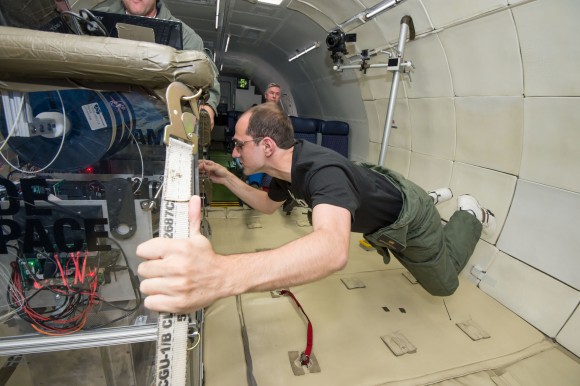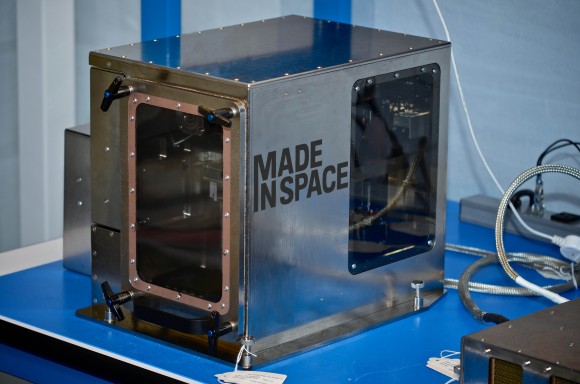3-D Printer To Fly To Space In August, Sooner Than Planned
Want to stay on top of all the space news? Follow @universetoday on Twitter

A 3-D printer intended for the International Space Station has passed
its NASA certifications with flying colors — earning the device a trip
to space sooner than expected. The next Dragon spacecraft, scheduled to
launch in August, will carry the Made In Space printer on board.
“Passing the final tests and shipping the hardware are significant milestones, but they ultimately lead to an even more meaningful one – the capability for anyone on Earth to have the option of printing objects on the ISS. This is unprecedented access to space,” stated Made In Space CEO Aaron Kemmer.
The device was originally supposed to launch not on this next Dragon flight, but the one after that. But it recently completed several tests looking at everything from vibration to human design to electromagnetic interference, and was deemed enough of a “minimal risk” to get moved up a slot.
This 3-D printer will be the first to be used in orbit. Officials have already printed out several items on the ground to serve as a kind of “ground truth” to see how well the device works when it is installed on the space station. It will be put into a “science glovebox” on the International Space Station and print out 21 demonstration parts, such as tools.
“The next phase will serve to demonstrate utilization of meaningful parts such as crew tools, payload ancillary hardware, and potential commercial applications such as cubesat components,” Made In Space added in a statement.
Once fully functional, the 3-D printer is supposed to reduce the need to ship parts from Earth when they break. This will save a lot of time, not to mention launch costs, the company said. It could also allow astronauts to manufacture new tools on the fly when “unforeseen situations” arise in orbit.
Check out more about the project in this past Universe Today story. Another NASA 3-D printer contract, given to the Systems & Materials Research Cooperation, could lead to a device to
manufacture food for crew members.
Source: Made In Space

A
3-D printer from Made In Space Inc. gets put through its paces during a
simulated microgravity flight on a Zero G airplane. Credit: Devin Boldt
“Passing the final tests and shipping the hardware are significant milestones, but they ultimately lead to an even more meaningful one – the capability for anyone on Earth to have the option of printing objects on the ISS. This is unprecedented access to space,” stated Made In Space CEO Aaron Kemmer.
The device was originally supposed to launch not on this next Dragon flight, but the one after that. But it recently completed several tests looking at everything from vibration to human design to electromagnetic interference, and was deemed enough of a “minimal risk” to get moved up a slot.
This 3-D printer will be the first to be used in orbit. Officials have already printed out several items on the ground to serve as a kind of “ground truth” to see how well the device works when it is installed on the space station. It will be put into a “science glovebox” on the International Space Station and print out 21 demonstration parts, such as tools.
“The next phase will serve to demonstrate utilization of meaningful parts such as crew tools, payload ancillary hardware, and potential commercial applications such as cubesat components,” Made In Space added in a statement.
Once fully functional, the 3-D printer is supposed to reduce the need to ship parts from Earth when they break. This will save a lot of time, not to mention launch costs, the company said. It could also allow astronauts to manufacture new tools on the fly when “unforeseen situations” arise in orbit.
Check out more about the project in this past Universe Today story. Another NASA 3-D printer contract, given to the Systems & Materials Research Cooperation, could lead to a device to
manufacture food for crew members.
Source: Made In Space

No comments:
Post a Comment
Please leave a comment-- or suggestions, particularly of topics and places you'd like to see covered